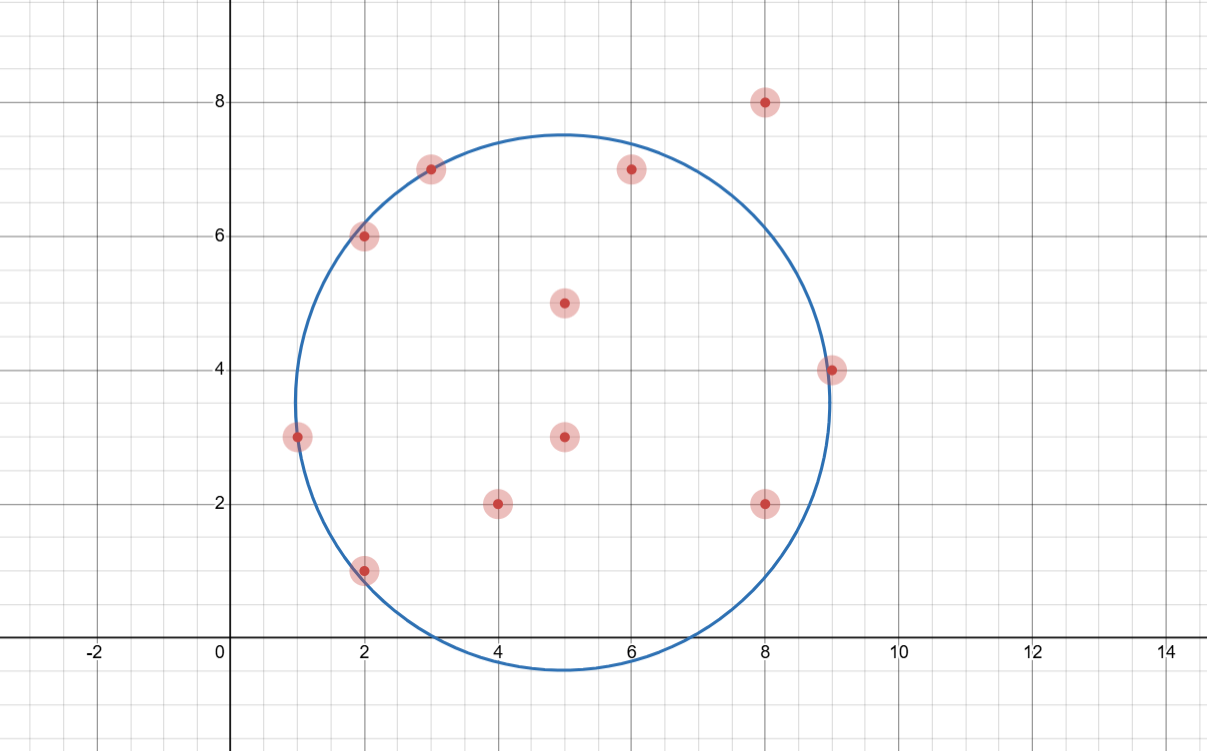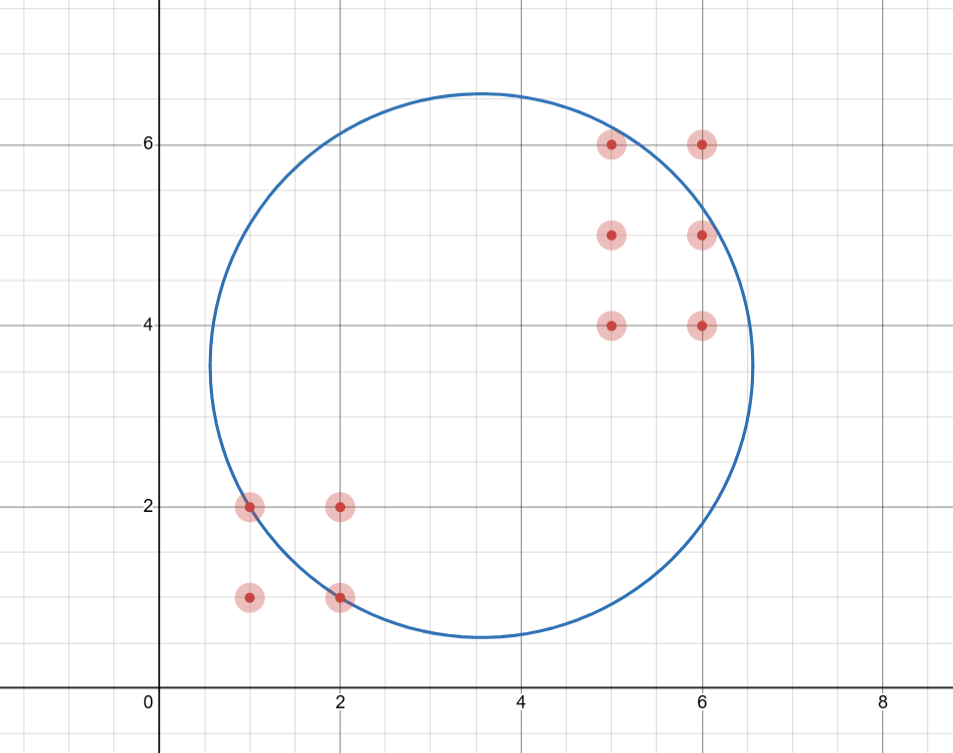Texas Sharpshooter
The Texas Sharpshooter Fallacy is a fallacy where someone takes meaningless data, and formulates patterns around it to pretend it holds some deeper meaning. A good analogy is shooting a blank wall, then painting a target around the bullet hole to pretend like you "got a bullseye".
After shooting the wall times, you want to fool your friends into thinking you're a sharpshooter! If you draw a target of radius
, what's the maximum number of bullets it could enclose?
Input
The first line contains two integers and
, indicating that there are
bullet holes in the wall, and you will draw a target with a radius of
units.
The next lines contain integers
and
,
, indicating that one of the bullet holes is
units above and
units to the right of the bottom-left corner of the wall. Each bullet hole has a unique position.
Output
Output the maximum number of bullet holes you could encapsulate in a target placed anywhere on the wall.
Clarifications
Bullets on the circumference of the target should be considered inside it.
Example
Input 1
11 4
1 3
8 2
6 7
2 6
4 2
8 8
5 3
3 7
9 4
5 5
2 1Output 1
9With a target of radius centered at roughly
, you can capture 9 out of the 11 points. It can be shown that this is the maximum number of points you can capture.

Input 2
10 3
1 1
1 2
2 1
2 2
5 5
5 6
5 4
6 5
6 6
6 4Output 2
8With a target of radius centered at roughly
, you can draw a target that captures 8 out of the 10 points. It can be shown that this is the maximum number of points you can capture.

Input 3
5 1
0 0
0 1
1 0
0 2
1 1Output 3
4
Comments